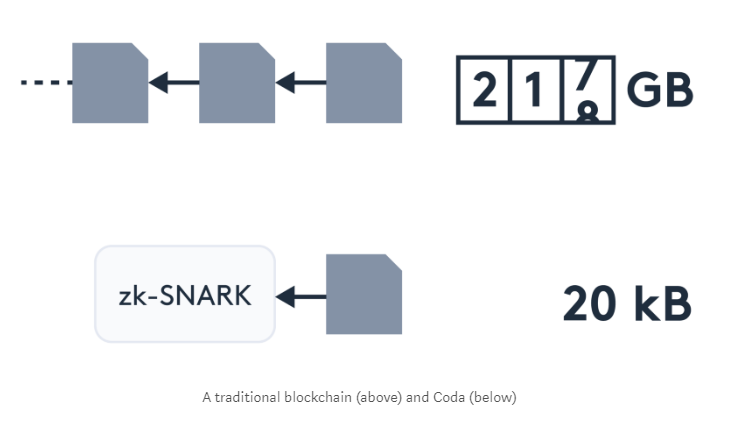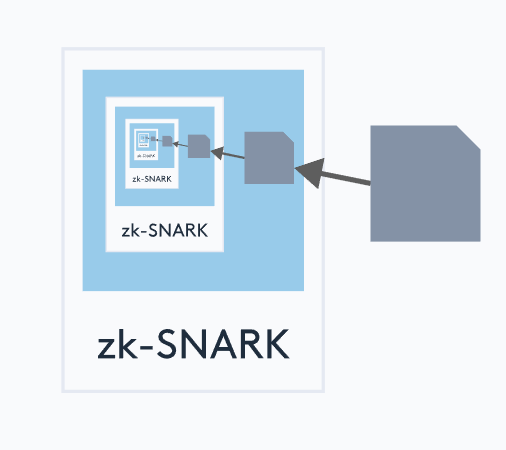A new era developing the area of decentralization and scalability is starting on. Future crypto projects can all redirect their efforts in the conception created by the Coda Protocol. It all comes to compressing the blockchain to a size giving the users the opportunity to run a node in their web browser.
Welcome Coda
What this project aims for, is a constant-sized blockchain, which is happening by simply compressing the ledger into snapshots as big as a few tweets. This will offer the possibility to perform thousands of transactions per second, keeping it all decentralized. Do you know what this means? Any device will be able to check the balance, no matter of their small bandwidth. You’ll be able to run a node and validate the blockchain using even your mobile phone! Using a zk-SNARKS allows Coda to print screen the blockchain and send a snapshot when needed, instead of transferring all the blockchain information when an action’s requested.

The compact blockchain powered by Coda
The hurdle for mass adoption of the crypto projects, in general, is the gap between decentralization and scalability, which is likely to get solved when anyone can use the blockchain, without necessary downloading bandwidth. This way the free storage will become less than a megabyte of data. Users will be required to hold only a SNARK with the current status of the blockchain simply as proof of its existence. Ultimately, this makes the blockchain independent of its own chain length. No matter how fast it grows, the transaction cost will remain the same for all the users in the Coda network.

What’s more on zk-SNARKS?
Actually, the function of zk-SNARKS in the Coda project relies to the zero-knowledge proof, which is able to show some knowledge of information without really knowing the information itself. Applying it, help a Node to validate a block, without knowing that the transaction is processed. The concept works with a cryptographic evidence to replace the growing blockchain into a small snapshot. At the moment, the test net is sending a copy of this shot to its users via their browser. Once the customer validates it, he can receive his account credentials by a Merkle-path from the blockchain’s hash. All these are a matter of kilobytes.

What else to expect from Coda?
Right now, the team is working hard on making Coda an open-sourced project and in parallel build a large and supporting Coda community. At the end of this year, we might see the beta test net, which’s fixes will help the developers to prepare for the main net launching, planned for the first half of 2019. There are no plans for future token distributions, but we can stay tuned in Coda’s social channels.
Coda has its alpha test net online and it welcomes all of you to join and become part of the truly decentralized crypto project.